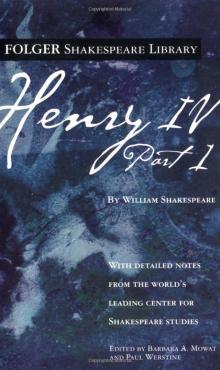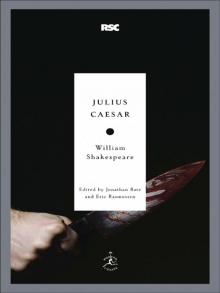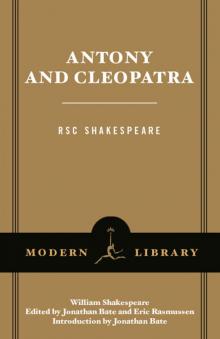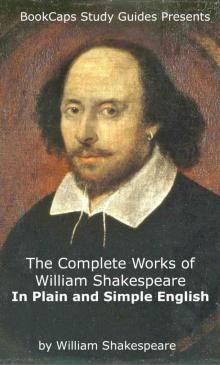- Home
- William Shakespeare
Much Ado About Nothing (Arden Shakespeare: Third Series) Page 3
Much Ado About Nothing (Arden Shakespeare: Third Series) Read online
Page 3
sundry great disorders and inconveniences have been found to ensue to this city by the inordinate haunting of great multitudes of people, specially youth, to plays, interludes, and shows, namely occasion of frays and quarrels, evil practices of incontinency in great inns having chambers and secret places adjoining to their open stages and galleries.
The Common Council ordered that innkeepers who wished licenses to hold performance put up a bond and make contributions to the poor.
The requirement that plays and innyard theaters be licensed, along with the other drawbacks of playing at inns and presumably along with the success of the Red Lion, led James Burbage to rent a plot of land northeast of the city walls, on property outside the jurisdiction of the city. Here he built England's second playhouse, called simply the Theatre. About all that is known of its construction is that it was wood. It soon had imitators, the most famous being the Globe (1599), essentially an amphitheater built across the Thames (again outside the city's jurisdiction), constructed with timbers of the Theatre, which had been dismantled when Burbage's lease ran out.
Admission to the theater was one penny, which allowed spectators to stand at the sides and front of the stage that jutted into the yard. An additional penny bought a seat in a covered part of the theater, and a third penny bought a more comfortable seat and a better location. It is notoriously difficult to translate prices into today's money, since some things that are inexpensive today would have been expensive in the past and vice versa--a pipeful of tobacco (imported, of course) cost a lot of money, about three pennies, and an orange (also imported) cost two or three times what a chicken cost--but perhaps we can get some idea of the low cost of the penny admission when we realize that a penny could also buy a pot of ale. An unskilled laborer made about five or sixpence a day, an artisan about twelve pence a day, and the hired actors (as opposed to the sharers in the company, such as Shakespeare) made about ten pence a performance. A printed play cost five or sixpence. Of course a visit to the theater (like a visit to a baseball game today) usually cost more than the admission since the spectator probably would also buy food and drink. Still, the low entrance fee meant that the theater was available to all except the very poorest people, rather as movies and most athletic events are today. Evidence indicates that the audience ranged from apprentices who somehow managed to scrape together the minimum entrance fee and to escape from their masters for a few hours, to prosperous members of the middle class and aristocrats who paid the additional fee for admission to the galleries. The exact proportion of men to women cannot be determined, but women of all classes certainly were present. Theaters were open every afternoon but Sundays for much of the year, except in times of plague, when they were closed because of fear of infection. By the way, no evidence suggests the presence of toilet facilities. Presumably the patrons relieved themselves by making a quick trip to the fields surrounding the playhouses.
There are four important sources of information about the structure of Elizabethan public playhouses--drawings, a contract, recent excavations, and stage directions in the plays. Of drawings, only the so-called de Witt drawing (c. 1596) of the Swan--really his friend Aernout van Buchell's copy of Johannes de Witt's drawing--is of much significance. The drawing, the only extant representation of the interior of an Elizabethan theater, shows an amphitheater of three tiers, with a stage jutting from a wall into the yard or center of the building. The tiers are roofed, and part of the stage is covered by a roof that projects from the rear and is supported at its front on two posts, but the groundlings, who paid a penny to stand in front of the stage or at its sides, were exposed to the sky. (Performances in such a playhouse were held only in the daytime; artificial illumination was not used.) At the rear of the stage are two massive doors; above the stage is a gallery.
Johannes de Witt, a Continental visitor to London, made a drawing of the Swan theater in about the year 1596. The original drawing is lost; this is Acrnout van Buchell's copy of it.
The second major source of information, the contract for the Fortune (built in 1600), specifies that although the Globe (built in 1599) is to be the model, the Fortune is to be square, eighty feet outside and fifty-five inside. The stage is to be forty-three feet broad, and is to extend into the middle of the yard, i.e., it is twenty-seven and a half feet deep.
The third source of information, the 1989 excavations of the Rose (built in 1587), indicate that the Rose was fourteen-sided, about seventy-two feet in diameter with an inner yard almost fifty feet in diameter. The stage at the Rose was about sixteen feet deep, thirty-seven feet wide at the rear, and twenty-seven feet wide downstage. The relatively small dimensions and the tapering stage, in contrast to the rectangular stage in the Swan drawing, surprised theater historians and have made them more cautious in generalizing about the Elizabethan theater. Excavations at the Globe have not yielded much information, though some historians believe that the fragmentary evidence suggests a larger theater, perhaps one hundred feet in diameter.
From the fourth chief source, stage directions in the plays, one learns that entrance to the stage was by the doors at the rear ("Enter one citizen at one door, and another at the other "). A curtain hanging across the doorway--or a curtain hanging between the two doorways--could provide a place where a character could conceal himself, as Polonius does, when he wishes to overhear the conversation between Hamlet and Gertrude. Similarly, withdrawing a curtain from the doorway could "discover" (reveal) a character or two. Such discovery scenes are very rare in Elizabethan drama, but a good example occurs in The Tempest (5.1.171), where a stage direction tells us, "Here Prospero discovers Ferdinand and Miranda playing at chess. " There was also some sort of playing space "aloft" or "above" to represent, for instance, the top of a city's walls or a room above the street. Doubtless each theater had its own peculiarities, but perhaps we can talk about a "typical" Elizabethan theater if we realize that no theater need exactly fit the description, just as no mother is the average mother with 2.7 children.
This hypothetical theater is wooden, round, or polygonal (in Henry V Shakespeare calls it a "wooden O") capable of holding some eight hundred spectators who stood in the yard around the projecting elevated stage--these spectators were the "groundlings"--and some fifteen hundred additional spectators who sat in the three roofed galleries. The stage, protected by a "shadow" or "heavens" or roof, is entered from two doors; behind the doors is the "tiring house" (attiring house, i.e., dressing room), and above the stage is some sort of gallery that may sometimes hold spectators but can be used (for example) as the bedroom from which Romeo--according to a stage direction in one text--"goeth down." Some evidence suggests that a throne can be lowered onto the platform stage, perhaps from the "shadow"; certainly characters can descend from the stage through a trap or traps into the cellar or "hell." Sometimes this space beneath the stage accommodates a sound-effects man or musician (in Antony and Cleopatra "music of the hautboys [oboes] is under the stage") or an actor (in Hamlet the "Ghost cries under the stage"). Most characters simply walk on and off through the doors, but because there is no curtain in front of the platform, corpses will have to be carried off (Hamlet obligingly clears the stage of Polonius's corpse, when he says, "I'll lug the guts into the neighbor room"). Other characters may have fallen at the rear, where a curtain on a doorway could be drawn to conceal them.
Such may have been the "public theater," so called because its inexpensive admission made it available to a wide range of the populace. Another kind of theater has been called the "private theater" because its much greater admission charge (sixpence versus the penny for general admission at the public theater) limited its audience to the wealthy or the prodigal. The private theater was basically a large room, entirely roofed and therefore artificially illuminated, with a stage at one end. The theaters thus were distinct in two ways: One was essentially an amphitheater that catered to the general public; the other was a hall that catered to the wealthy. In 1576 a hall theater was established in Black
friars, a Dominican priory in London that had been suppressed in 1538 and confiscated by the Crown and thus was not under the city's jurisdiction. All the actors in this Blackfriars theater were boys about eight to thirteen years old (in the public theaters similar boys played female parts; a boy Lady Macbeth played to a man Macbeth). Near the end of this section on Shakespeare's theater we will talk at some length about possible implications in this convention of using boys to play female roles, but for the moment we should say that it doubtless accounts for the relative lack of female roles in Elizabethan drama. Thus, in A Midsummer Night's Dream, out of twenty-one named roles, only four are female; in Hamlet, out of twenty-four, only two (Gertrude and Ophelia) are female. Many of Shakespeare's characters have fathers but no mothers--for instance, King Lear's daughters. We need not bring in Freud to explain the disparity; a dramatic company had only a few boys in it.
To return to the private theaters, in some of which all of the performers were children--the "eyrie of... little eyases" (nest of unfledged hawks--2.2.347--48) which Rosencrantz mentions when he and Guildenstern talk with Hamlet. The theater in Blackfriars had a precarious existence, and ceased operations in 1584. In 1596 James Burbage, who had already made theatrical history by building the Theatre, began to construct a second Blackfriars theater. He died in 1597, and for several years this second Blackfriars theater was used by a troupe of boys, but in 1608 two of Burbage's sons and five other actors (including Shakespeare) became joint operators of the theater, using it in the winter when the open-air Globe was unsuitable. Perhaps such a smaller theater, roofed, artificially illuminated, and with a tradition of a wealthy audience, exerted an influence in Shakespeare's late plays.
Performances in the private theaters may well have had intermissions during which music was played, but in the public theaters the action was probably uninterrupted, flowing from scene to scene almost without a break. Actors would enter, speak, exit, and others would immediately enter and establish (if necessary) the new locale by a few properties and by words and gestures. To indicate that the scene took place at night, a player or two would carry a torch. Here are some samples of Shakespeare establishing the scene: This is Illyria, lady. (Twelfth Night, 1.2.2)
Well, this is the Forest of Arden. (As You Like It, 2.4.14)
This castle has a pleasant seat; the air
Nimbly and sweetly recommends itself
Unto our gentle senses. (Macbeth, 1.6.1-3)
The west yet glimmers with some streaks of day.
(Macbeth, 3.3.5)
Sometimes a speech will go far beyond evoking the minimal setting of place and time, and will, so to speak, evoke the social world in which the characters move. For instance, early in the first scene of The Merchant of Venice Salerio suggests an explanation for Antonio's melancholy. (In the following passage, pageants are decorated wagons, floats, and cursy is the verb "to curtsy," or "to bow.")
Your mind is tossing on the ocean,
There where your argosies with portly sail--
Like signiors and rich burghers on the flood,
Or as it were the pageants of the sea--
Do overpeer the petty traffickers
That cursy to them, do them reverence,
As they fly by them with their woven wings. (1.1.8-14)
Late in the nineteenth century, when Henry Irving produced the play with elaborate illusionistic sets, the first scene showed a ship moored in the harbor, with fruit vendors and dock laborers, in an effort to evoke the bustling and exotic life of Venice. But Shakespeare's words give us this exotic, rich world of commerce in his highly descriptive language when Salerio speaks of "argosies with portly sail" that fly with "woven wings"; equally important, through Salerio Shakespeare conveys a sense of the orderly, hierarchical society in which the lesser ships, "the petty traffickers," curtsy and thereby "do ... reverence" to their superiors, the merchant prince's ships, which are "Like signiors and rich burghers."
On the other hand, it is a mistake to think that except for verbal pictures the Elizabethan stage was bare. Although Shakespeare's Chorus in Henry V calls the stage an "unworthy scaffold" (Prologue 1.10) and urges the spectators to "eke out our performance with your mind" (Prologue 3.35), there was considerable spectacle. The last act of Macbeth, for instance, has five stage directions calling for "drum and colors," and another sort of appeal to the eye is indicated by the stage direction "Enter Macduff, with Macbeth's head." Some scenery and properties may have been substantial; doubtless a throne was used, but the pillars supporting the roof would have served for the trees on which Orlando pins his poems in As You Like It.
Having talked about the public theater--"this wooden O"--at some length, we should mention again that Shakespeare's plays were performed also in other locales. Alvin Kernan, in Shakespeare, the King's Playwright: Theater in the Stuart Court 1603-1613 (1995) points out that "several of [Shakespeare's] plays contain brief theatrical performances, set always in a court or some noble house. When Shakespeare portrayed a theater, he did not, except for the choruses in Henry V, imagine a public theater" (p. 195). (Examples include episodes in The Taming of the Shrew, A Midsummer Night's Dream, Hamlet, and The Tempest.)
A Note on the Use of Boy Actors in Female Roles
Until fairly recently, scholars were content to mention that the convention existed; they sometimes also mentioned that it continued the medieval practice of using males in female roles, and that other theaters, notably in ancient Greece and in China and Japan, also used males in female roles. (In classical Noh drama in Japan, males still play the female roles.) Prudery may have been at the root of the academic failure to talk much about the use of boy actors, or maybe there really is not much more to say than that it was a convention of a male-centered culture (Stephen Greenblatt's view, in Shakespearean Negotiations [1988]). Further, the very nature of a convention is that it is not thought about: Hamlet is a Dane and Julius Caesar is a Roman, but in Shakespeare's plays they speak English, and we in the audience never give this odd fact a thought. Similarly, a character may speak in the presence of others and we understand, again without thinking about it, that he or she is not heard by the figures on the stage (the aside); a character alone on the stage may speak (the soliloquy), and we do not take the character to be unhinged; in a realistic (box) set, the fourth wall, which allows us to see what is going on, is miraculously missing. The no-nonsense view, then, is that the boy actor was an accepted convention, accepted unthinkingly--just as today we know that Kenneth Branagh is not Hamlet, Al Pacino is not Richard II, and Denzel Washington is not the Prince of Aragon. In this view, the audience takes the performer for the role, and that is that; such is the argument we now make for race-free casting, in which African-Americans and Asians can play roles of persons who lived in medieval Denmark and ancient Rome. But gender perhaps is different, at least today. It is a matter of abundant academic study: The Elizabethan theater is now sometimes called a transvestite theater, and we hear much about cross-dressing.
Shakespeare himself in a very few passages calls attention to the use of boys in female roles. At the end of As You Like It the boy who played Rosalind addresses the audience, and says, "O men, ... if I were a woman, I would kiss as many of you as had beards that pleased me." But this is in the Epilogue; the plot is over, and the actor is stepping out of the play and into the audience's everyday world. A second reference to the practice of boys playing female roles occurs in Antony and Cleopatra, when Cleopatra imagines that she and Antony will be the subject of crude plays, her role being performed by a boy: The quick comedians
Extemporally will stage us, and present
Our Alexandrian revels: Antony
Shall be brought drunken forth, and I shall see
Some squeaking Cleopatra boy my greatness. (5.2.216-20)
In a few other passages, Shakespeare is more indirect. For instance, in Twelfth Night Viola, played of course by a boy, disguises herself as a young man and seeks service in the house of a lord. She enlists the help
of a Captain, and (by way of explaining away her voice and her beardlessness) says,
I'll serve this duke
Thou shalt present me as an eunuch to him. (1.2.55-56)
In Hamlet, when the players arrive in 2.2, Hamlet jokes with the boy who plays a female role. The boy has grown since Hamlet last saw him: "By'r Lady, your ladyship is nearer to heaven than when I saw you last by the altitude of a chopine" (a lady's thick-soled shoe). He goes on: "Pray God your voice ... be not cracked" (434-38).
Exactly how sexual, how erotic, this material was and is, is now much disputed. Again, the use of boys may have been unnoticed, or rather not thought about--an unexamined convention--by most or all spectators most of the time, perhaps all of the time, except when Shakespeare calls the convention to the attention of the audience, as in the passages just quoted. Still, an occasional bit seems to invite erotic thoughts. The clearest example is the name that Rosalind takes in As You Like It, Ganymede--the beautiful youth whom Zeus abducted. Did boys dressed to play female roles carry homoerotic appeal for straight men (Lisa Jardine's view, in Still Harping on Daughters [1983]), or for gay men, or for some or all women in the audience? Further, when the boy actor played a woman who (for the purposes of the plot) disguised herself as a male, as Rosalind, Viola, and Portia do--so we get a boy playing a woman playing a man--what sort of appeal was generated, and for what sort of spectator?

 Romeo and Juliet
Romeo and Juliet As You Like It (Folger Shakespeare Library)
As You Like It (Folger Shakespeare Library) Hamlet
Hamlet Richard II (Folger Shakespeare Library)
Richard II (Folger Shakespeare Library) Macbeth
Macbeth Henry V
Henry V The Winter's Tale
The Winter's Tale The Taming of the Shrew
The Taming of the Shrew The Comedy of Errors
The Comedy of Errors King Lear (Folger Shakespeare Library)
King Lear (Folger Shakespeare Library) Twelfth Night
Twelfth Night Othello
Othello The Two Gentlemen of Verona
The Two Gentlemen of Verona Henry IV, Part 1 (Folger Shakespeare Library)
Henry IV, Part 1 (Folger Shakespeare Library) King John/Henry VIII (Signet Classics)
King John/Henry VIII (Signet Classics) The Tempest
The Tempest Titus Andronicus (Dover Publications)
Titus Andronicus (Dover Publications) A Midsummer Night's Dream
A Midsummer Night's Dream Antony and Cleopatra (Arden Shakespeare: Third Series)
Antony and Cleopatra (Arden Shakespeare: Third Series) The Oxford Shakespeare: Henry IV, Part 2 (Oxford World's Classics)
The Oxford Shakespeare: Henry IV, Part 2 (Oxford World's Classics) Much Ado About Nothing (Arden Shakespeare: Third Series)
Much Ado About Nothing (Arden Shakespeare: Third Series) All's Well That Ends Well
All's Well That Ends Well Titus Andronicus & Timon of Athens
Titus Andronicus & Timon of Athens Richard III (Modern Library Classics)
Richard III (Modern Library Classics) Coriolanus
Coriolanus srsly Hamlet (OMG Shakespeare)
srsly Hamlet (OMG Shakespeare) The Merchant of Venice
The Merchant of Venice Richard III
Richard III Richard II
Richard II Pericles
Pericles As You Like It
As You Like It Cymbeline
Cymbeline Alls Wel that ends Well
Alls Wel that ends Well YOLO Juliet
YOLO Juliet A Midsummer Night #nofilter
A Midsummer Night #nofilter Love's Labour's Lost
Love's Labour's Lost Much Ado About Nothing
Much Ado About Nothing Romeo & Juliet & Vampires
Romeo & Juliet & Vampires The Arden Shakespeare Complete Works
The Arden Shakespeare Complete Works Julius Caesar
Julius Caesar Five Revenge Tragedies: The Spanish Tragedy, Hamlet, Antonio's Revenge, The Tragedy of Hoffman, The Revenger's Tragedy (Penguin Classics)
Five Revenge Tragedies: The Spanish Tragedy, Hamlet, Antonio's Revenge, The Tragedy of Hoffman, The Revenger's Tragedy (Penguin Classics) Macbeth #killingit
Macbeth #killingit The Oxford Shakespeare: The Complete Works
The Oxford Shakespeare: The Complete Works Hamlet, Prince of Denmark (Collins edition)
Hamlet, Prince of Denmark (Collins edition) King John & Henry VIII
King John & Henry VIII Henry IV, Part 2
Henry IV, Part 2 Complete Plays, The
Complete Plays, The The Sonnets and Other Poems
The Sonnets and Other Poems Antony and Cleopatra
Antony and Cleopatra Henry IV, Part 1
Henry IV, Part 1 Is This a Dagger Which I See Before Me?
Is This a Dagger Which I See Before Me? The Complete Works of William Shakespeare In Plain and Simple English (Translated)
The Complete Works of William Shakespeare In Plain and Simple English (Translated) The Sonnets
The Sonnets